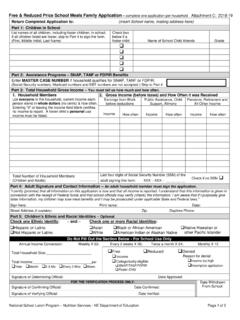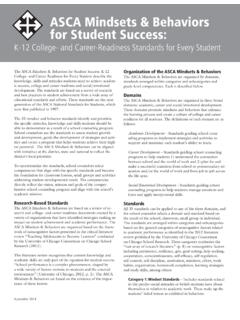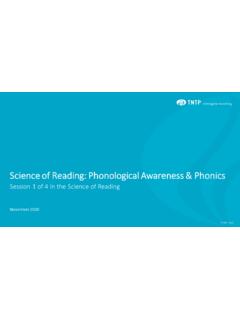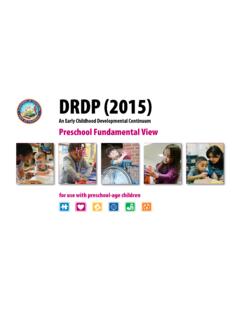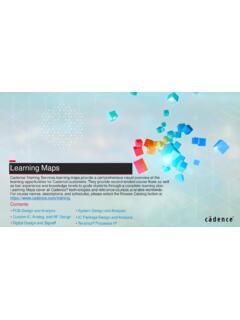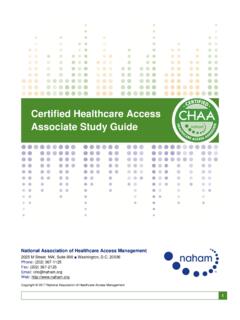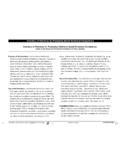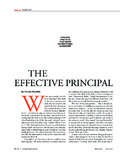Transcription of Early Learning Guidelines: Nebraska’s Birth to Five ...
1 Early Learning guidelines : nebraska 's Birth to Five Learning and Development Standards | Page 1. To nebraska 's families and Early childhood education professionals: Nearly 15 years ago, nebraska published the first version of the Early Learning guidelines . Since then, families, educators, and other related service professionals have used the guidelines with many children in a variety of settings. In 2017-2018, the nebraska Department of Education (NDE), the Head Start-State Collaboration Office, the nebraska Department of Health and Human services (DHHS), and numerous Early childhood community partners began the process to thoroughly revise the nebraska Early Learning guidelines . This new revision is aligned with: National Education Goals Panel School Readiness Domains, Head Start Child Development and Early Learning Framework, Teaching Strategies GOLD, nebraska Department of Education K-12 Standards, nebraska Department of Education Rule 11 regulations, and nebraska Child Care Regulations.
2 Updates to this document include more emphasis on meeting the diverse needs of children, new formatting for understanding the Birth to five continuum of development, current research based recommendations, and updated strategies to support teaching with intent throughout the day. We hope you find this document useful in better understanding how positive relationships, interactions, routines, and understanding of Early childhood support the Learning and development of children from the very beginning. These guidelines are not intended to cover every possible aspect of development, but instead to offer some ideas as you think about the many ways to promote the growth, Learning , and well-being of nebraska 's youngest children.
3 We encourage you to share the updated Early Learning guidelines : nebraska 's Birth to Five Learning and Development Standards with others as a resource to assist in helping the children in your care flourish. Respectfully, Matthew L. Blomstedt, Courtney N. Phillips, nebraska Commissioner of Education Chief Executive Officer nebraska Department of Health and Human services Melody Hobson, Administrator Matthew T. Wallen, Director Office of Early Childhood Division of Children and Family services nebraska Department of Education nebraska Department of Health and Human services Early Learning guidelines : nebraska 's Birth to Five Learning and Development Standards | Page 1. TABLE OF CONTENTS. Welcome to the Early Learning guidelines : Health and Physical Development 42.
4 nebraska 's Birth to Five Learning and Development Standards 4 Fine (Small) Motor Skills ( ) 46. Purpose and Development/Revision Process 4 Gross (Large) Motor Skills ( ) 48. Health and Safety Practices ( ) 50. Guiding Principles Supporting Children's Learning and Nutrition ( ) 52. Development 5. Language and Literacy Development 54. The Adult and the Learning Environment 6 Listening and Understanding ( ) 58. Speaking and Communicating ( ) 60. The Child and the Learning Environment 7 Phonological Awareness ( ) 62. Value of High Quality Programs and Play in Children's Book Knowledge and Appreciation ( ) 64. Learning 7 Print Awareness and Early Writing ( ) 66. Use of Technology 8. Mathematics 68. Inclusive Learning Environments 9 Number and Operations ( ) 70.
5 Children with a Wide Range of Abilities 9 Geometry and Spatial Sense ( ) 72. Children from Diverse Backgrounds and Dual-Language Patterns and Measurements ( ) 74. Learners 10 Data Analysis ( ) 76. Children with Challenging Behaviors 11. Science 78. Preparing for Children's Success in Kindergarten and Beyond 14 Scientific Knowledge ( ) 80. Ready Children 14 Scientific Skills and Methods ( ) 82. Ready Schools 15. Ready Families 16 Creative Arts 84. Transition to Kindergarten 16 Music ( ) 88. Visual Art ( ) 90. Using the guidelines and Companion Documents 18 Movement ( ) 92. Dramatic Play ( ) 94. Social and Emotional Development 22. Self-Concept ( ) 26 Glossary: Early Learning guidelines : nebraska 's Birth to Five Self-Control ( ) 28 Learning and Development Standards Definitions 96.
6 Cooperation and Prosocial Behavior ( ) 30. Social Relationships ( ) 32 Resources and References to Support Early Learning 100. Knowledge of Families and Communities ( ) 34 Early Childhood Programing: Children's Growth, Development and Learning 100. Approaches to Learning 36 Inclusion: Supporting Diversity and Children with Initiative and Curiosity ( ) 38 Special Needs 103. Sensory Exploration, Reasoning, and Problem The Learning Environment 106. Solving ( ) 40 Curriculum Approaches to Young Children's Learning 107. Assessment Practices for Young Children and Programs 108. Partnering with Families 109. Early Learning guidelines : nebraska 's Birth to Five Learning and Development Standards | Page 2. Standards Summary Across All Domains 112.
7 Alignment of Early Learning guidelines to State and National Documents 114. Suggested Children's Books 123. Writers, Reviewers, and Revisers Acknowledgement 125. Early Learning guidelines : nebraska 's Birth to Five Learning and Development Standards | Page 3. WELCOME TO THE Early The purpose of the guidelines Learning guidelines : The guidelines are not a curriculum, nor are they an assessment. Rather, nebraska 'S Birth TO FIVE they are a framework to guide decisions about planning developmentally Learning AND DEVELOPMENT appropriate activities for young children and the Early childhood setting to assist in achieving the Learning and development standard. The guidelines STANDARDS provide a map from which adults can understand the developmental path.
8 That children will follow on their way to kindergarten. It is important to The Early Learning guidelines : nebraska 's Birth to Five Learning and remember that not all children will fulfill all of the expectations by the end of Development Standards (hereafter referred to as the guidelines ) is a their fifth year. The individual needs of each child must be met on a daily resource to provide information about young children's Learning and basis. The examples provided in the guidelines are meant to be development. The guidelines are intended to assist adults in planning representative of the age, not exhaustive lists of everything a child will and providing meaningful Learning experiences and environments for achieve within the domain.
9 Use of the guidelines promotes continuity and children in their care. consistency across all settings, and provides a foundation for success in school and in life. The guidelines provide information about: How were the guidelines developed & revised? 1. What children can typically be expected to know and do by the age of five; The development and revision of the guidelines was guided by the 2. What adults can do to provide experiences and environments leadership of several partners: that support Learning across the developmental and Learning nebraska Department of Education domains: nebraska Department of Health and Human services Social and Emotional Development nebraska Head Start Association Approaches to Learning nebraska Head Start-State Collaboration Office Health and Physical Development Language and Literacy Development To support the guidelines as a tool to be used by any adult working with any Mathematics child in any environment, input from parents, higher education, Science center- and home-based child care providers, and other service providers Creative Arts was included.
10 For a listing of contributing individuals, see page 126. All of these individual Learning and developmental domains are considered to be equally important and should be integrated across many activities within the daily routine. Each domain can be addressed every day in the natural environment that surrounds the child, through the materials provided for the child's exploration, and the support that adults provide the child. Early Learning guidelines : nebraska 's Birth to Five Learning and Development Standards | Page 4. GUIDING PRINCIPLES Learning is most meaningful when it is integrated across all areas SUPPORTING CHILDREN'S of development Learning AND DEVELOPMENT Each area of Learning influences other areas and cannot be taught in isolation.

